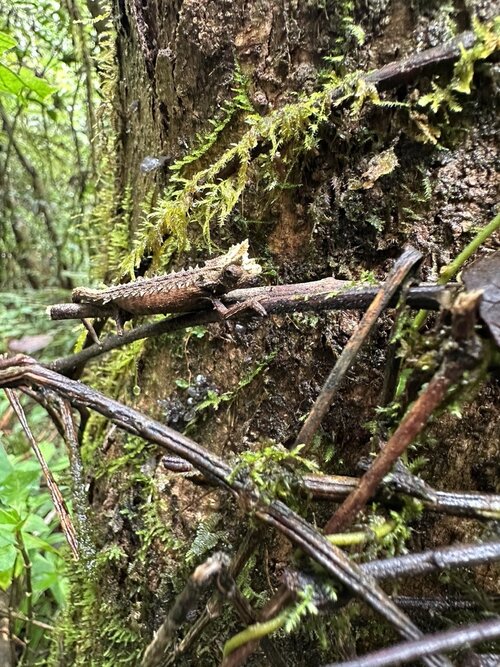This week I had Michael Nash (@javadi ) on the podcast and we talked about his experience with the number of Brookesia species he is working with. As he is breeding them he is the rare individual that can discuss their entire lifecycle. This week was a podcast episode, but Michael then came on to the Saturday morning Chameleons & Coffee Live show on Youtube where we took questions about these very charming chameleons!
You can listen to the podcast here
And then you can revisit the live show here
Some notable points that Michael brings up include:
1) He has used a soil heat pad to help with egg laying
2) There are species with mild dry seasons and more dramatic dry seasons - and you need to know what species you are dealing with to trigger breeding!
3) Co-habitation may be tolerated more than in other chameleons, but proper husbandry would have them individually raised
4) Deparasitization is much more difficult with small mouths!

Brookesia Thieli in Ranomafana National Park, Madagascar (Bill Strand)

Brookesia stumpfii (Micheal Nash)

Brookesia Habitat (Michael Nash)

Size of a baby Brookesia thieli (Michael Nash)
You can listen to the podcast here
And then you can revisit the live show here
Some notable points that Michael brings up include:
1) He has used a soil heat pad to help with egg laying
2) There are species with mild dry seasons and more dramatic dry seasons - and you need to know what species you are dealing with to trigger breeding!
3) Co-habitation may be tolerated more than in other chameleons, but proper husbandry would have them individually raised
4) Deparasitization is much more difficult with small mouths!

Brookesia Thieli in Ranomafana National Park, Madagascar (Bill Strand)
Brookesia stumpfii (Micheal Nash)
Brookesia Habitat (Michael Nash)
Size of a baby Brookesia thieli (Michael Nash)
